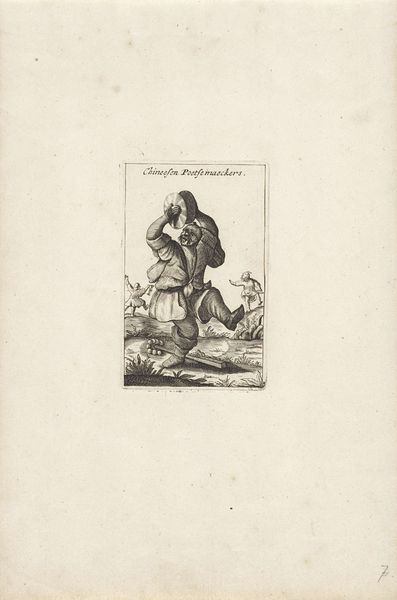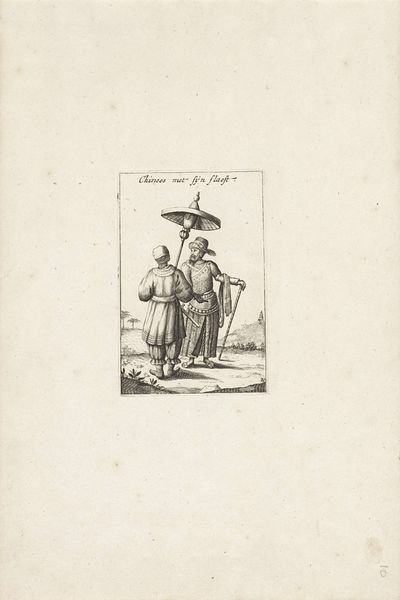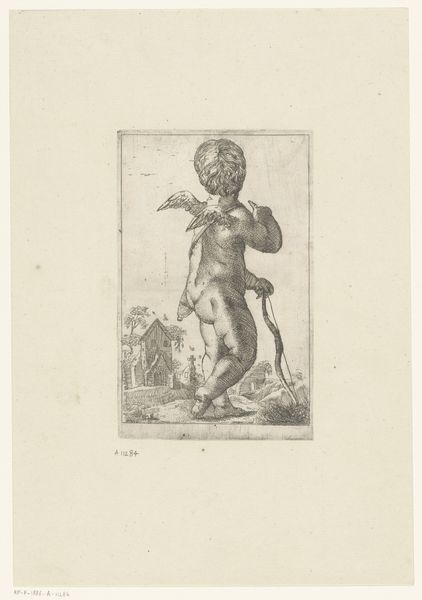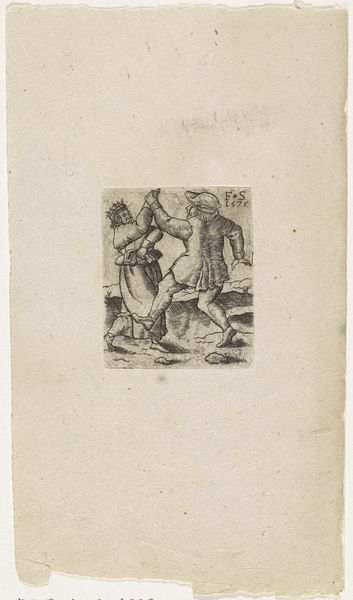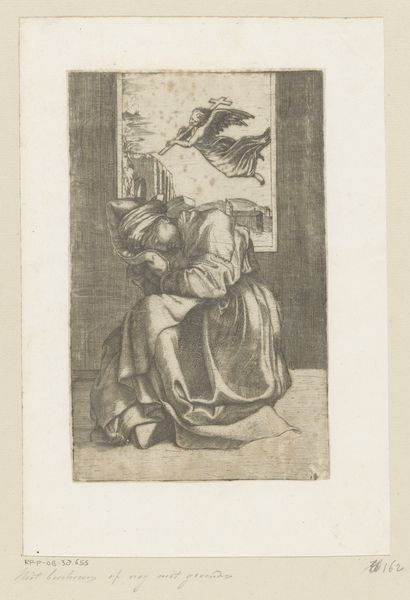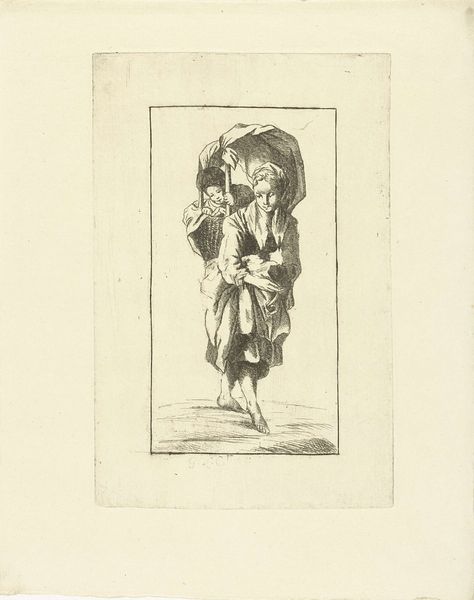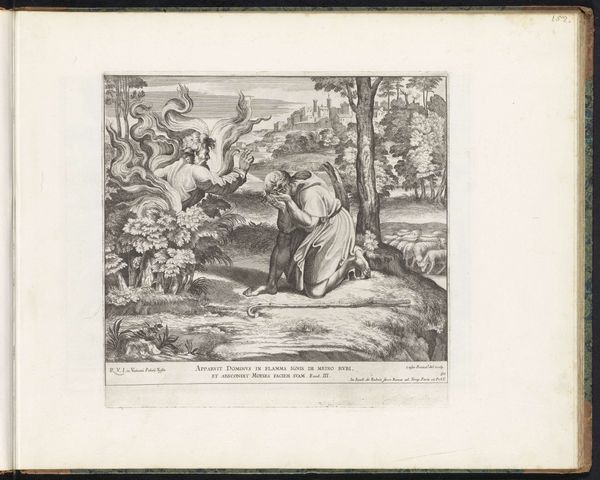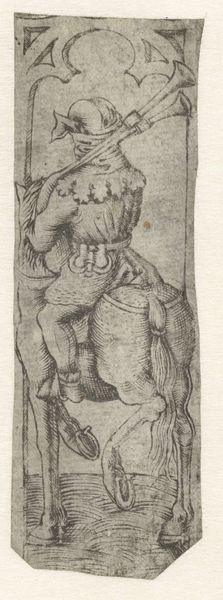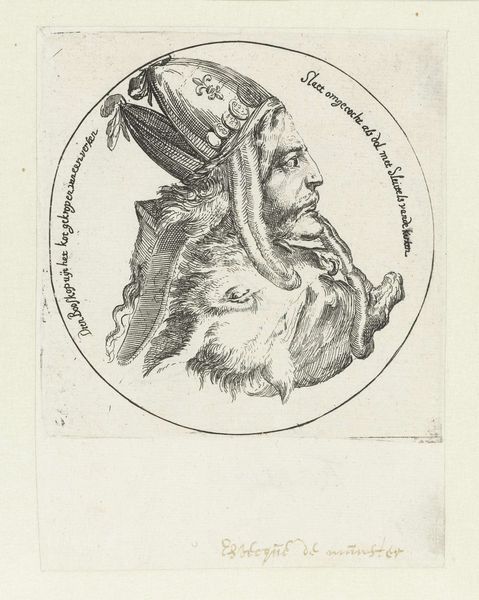
print, engraving
#
portrait
#
baroque
# print
#
old engraving style
#
genre-painting
#
engraving
Dimensions: height 102 mm, width 68 mm
Copyright: Rijks Museum: Open Domain
Curator: Look at this Baroque engraving, dating between 1682 and 1711, attributed to Pieter Schenk and held in the Rijksmuseum. It's titled "Chinese edelen," depicting two figures in what are assumed to be traditional Chinese garments. Editor: My immediate thought is how much labor was involved in the intricate details of these clothes. I imagine the artist meticulously etching each line, which probably has social connotations reflecting power dynamics or something? Curator: Absolutely, it presents us with a window into a bygone era's cultural perceptions. Their attire clearly signifies status; look at the ornate detailing of the woman’s headdress and the fur lining on the man's robe. Such details weren't merely aesthetic; they broadcast social standing, reinforcing hierarchical structures of the time. Editor: And considering this is an engraving, the process itself speaks volumes. The dissemination of such images—a time-consuming method in itself—indicates a desire to circulate certain ideas about the East among a European audience. It seems there's consumption happening on a grander scale as well as consumption portrayed through imagery. Curator: Precisely. Note also how the individuals are posed. There is something almost theatrical in the presentation. Their rigid posture is interesting – there's a carefully constructed identity being presented. Perhaps their clothing has a double-layered semiotic. The dress carries not only their status in their community, but represents them to those looking in. Editor: Agreed. The production context cannot be separated from its intention. The choice of materials and processes shapes meaning just as much as the content of the image. I'm left wondering, who were the engravers, and who had access to the materials, and what was the intended viewership of such a portrait. Curator: Indeed, questions around circulation and intended meaning. It’s like decoding a complex symbolic message encoded not just in the image itself, but the choices of Pieter Schenk! Editor: Seeing this reminds me how vital understanding the socio-economic roots are. Without examining the material conditions, it becomes difficult to engage fully with such historical work. Curator: Examining its layered meanings really expands how we understand the impact this image would have had on the culture and audience. Editor: Yes. I’m more conscious than before that our perspective on the meaning should include materials as culture and context, too!
Comments
No comments
Be the first to comment and join the conversation on the ultimate creative platform.

